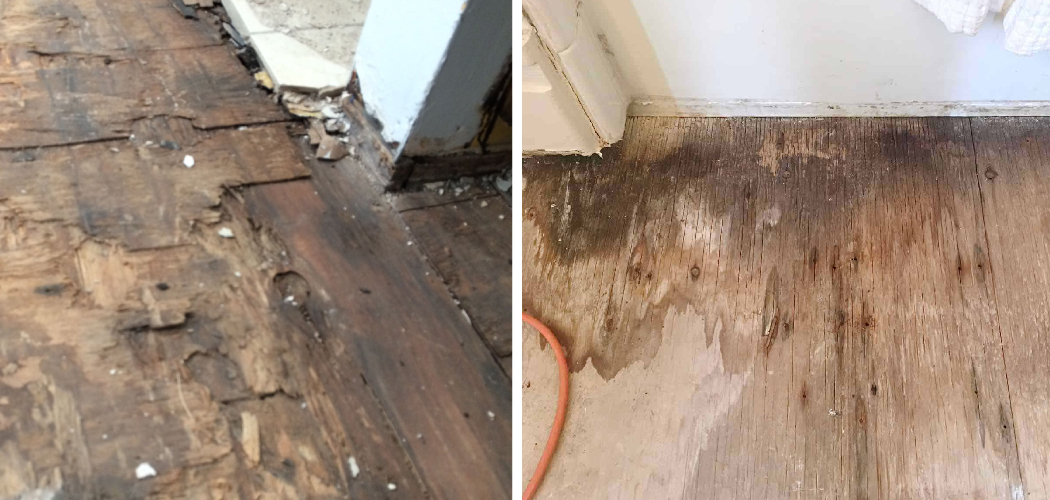Is your home’s subfloor rotted out? As a homeowner, it’s important to know if there are areas of decay and damage underneath your floors—not just for aesthetic purposes but also for structural integrity. Unstable subfloors can cause some serious problems down the road, leading to potentially costly repairs. That’s why today we’ll be talking about how to tell if subfloor is rotten—and what steps to take when you suspect issues underfoot.
Whether it’s wood rot or water damage, many signs can point to a problem beneath your floorboards. In this article, we’ll take a look at some of the most common signs that you should have your subfloor inspected. Just remember that if you are unsure, it’s always best to call in a professional.
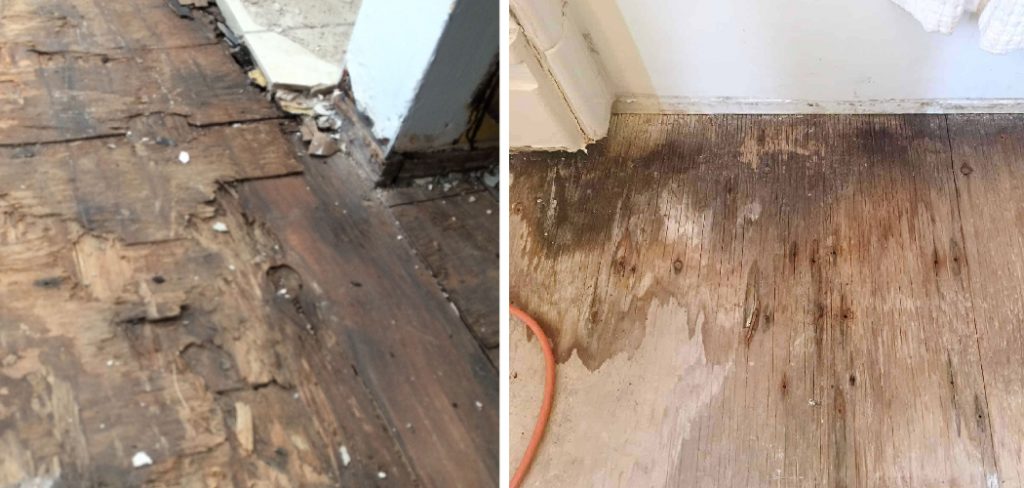
What are the Causes of Subfloor Rot?
Before diving into the signs indicating subfloor rot, let’s first look at what could be causing it. The most common cause of wood rot is moisture. This can occur due to flooding, plumbing leaks, or excessive humidity in your home. Depending on the severity of the water damage and how long it has been present, the effects on your subfloor may be more or less severe.
Another potential cause of damage to your subfloor is infestation by pests like termites and carpenter ants. These insects feed on wood fibers, weakening the structure and leading to decay over time.
These causes can be further exacerbated by improper ventilation, inadequate insulation, and poor drainage outside your home.
What Will You Need?
To properly inspect your subfloor, you’ll need a few basic tools. These include:
- A flashlight
- A flathead screwdriver
- An awl or probe (optional)
Once you have these items, it’s time to get to work.
10 Easy Steps on How to Tell if Subfloor is Rotten
Step 1. Identify Suspicious Areas:
Start by looking for any visible signs of damage on your floors. This could be discoloration, warping, or buckling of your floorboards. These are potential signs of underlying damage to the subfloor.
Step 2. Perform the Screwdriver Test:
Once you’ve identified suspicious areas, use your flathead screwdriver to probe these areas gently. If the screwdriver sinks into the wood with little resistance or the wood feels soft and spongy, it’s a clear sign of wood rot. Be careful not to force the tool in as it could further damage the subfloor. If you’re hesitant about causing additional harm, consider using a less invasive tool such as an awl or probe.

Step 3. Listen for Hollow Sounds:
Another method to identify rotten subflooring is by tapping the floor with your screwdriver handle or another solid object and listening out for any hollow or empty sounds. A solid, healthy subfloor should produce a dull thud, whereas a rotten or damaged subfloor might give off a hollow or echoey sound.
This can be a good indicator of areas where the wood has deteriorated underneath. However, this is not a foolproof method and other tests should be used in conjunction to confirm the condition of your subfloor.
Step 4. Check for Unusual Smells:
Often, rotten or damp wood produces a distinct musty or moldy smell. If you notice an unusual smell in certain areas of your home, particularly following any of the signs mentioned in the previous steps, this could be another indication of a rotten subfloor. Remember that mold can pose health risks if mold is present, so it’s important to address this issue promptly. Again, if you need clarification, it’s always best to consult with a professional.
Step 5. Inspect for Pest Activity:
The presence of pests like termites and carpenter ants can also indicate subfloor rot. Look for signs of these pests, like discarded wings, fecal pellets, or even insects. If you find evidence of pest activity, it could mean that these pests have been feasting on your subfloor, leading to decay and damage. Getting a professional pest control service is recommended if you discover signs of infestation.
Step 6. Assess Moisture Levels:
A direct sign of a rotting subfloor is the presence of moisture. This could be a result of a plumbing leak, flooding, or excessive humidity. If your floors feel damp or the area around or underneath them is unusually wet, this could be a sign that your subfloor is rotting.
You can use a moisture meter to measure the moisture level on your floors. High readings could indicate underlying problems. Remember to compare readings from different floor areas, as this will help you identify if there is a problem with the subfloor in specific areas.
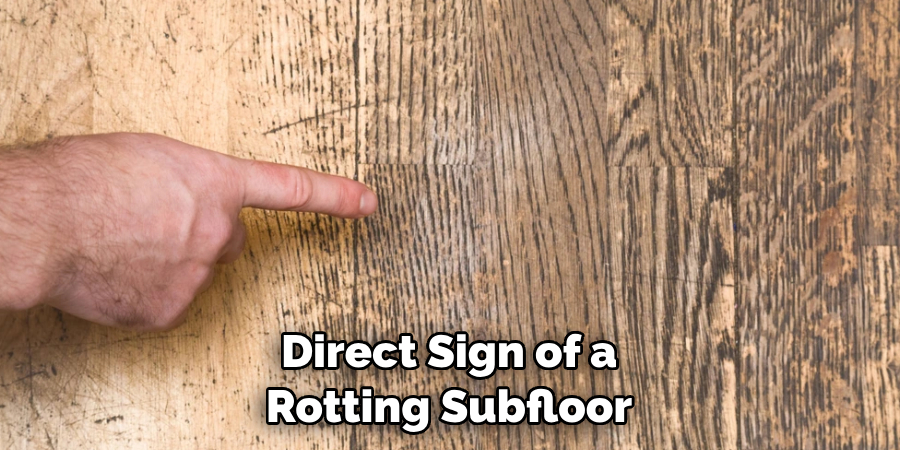
Step 7. Observe Structural Changes:
Areas of your home directly above a rotten subfloor may show instability, like doors and windows that no longer close properly or cracking plaster and drywall. These signs may indicate that the subfloor underneath lacks adequate support.
While these symptoms can be caused by a variety of issues, they often accompany rotting subfloor, especially in severe cases. Always consult a professional if you notice these kinds of changes in your home.
Step 8. Check the Basement or Crawl Space:
If you have a basement or a crawl space, this might be the best place to check for signs of a rotten subfloor. Look for visible signs of moisture infiltration or wood decay. If you notice any sagging or warping in the subfloor when viewed from below, this may be indicative of rot.
Similarly, patches of black, white, or green on the subfloor can be signs of mold or mildew, both of which thrive on wet wood and can quickly lead to rot. Make sure to wear protective gear, including a mask and gloves, when inspecting these areas to protect yourself from potential hazards.
Step 9. Consider the Age and Condition:
Older homes, particularly those that have not been well-maintained, are more susceptible to subfloor rot. If your home is several decades old and has a history of water damage or pest infestation, there’s a higher likelihood that your subfloors might be rotten. Even without visible signs, it’s wise to conduct regular checks as preventative maintenance.
Step 10. Seek Professional Help:
If you’ve gone through the steps as mentioned above and are still trying to figure out the condition of your subfloor, it’s best to call in a professional. A licensed contractor or home inspector can provide a thorough assessment of your subfloor, ensuring you have accurate information to decide on the next steps.
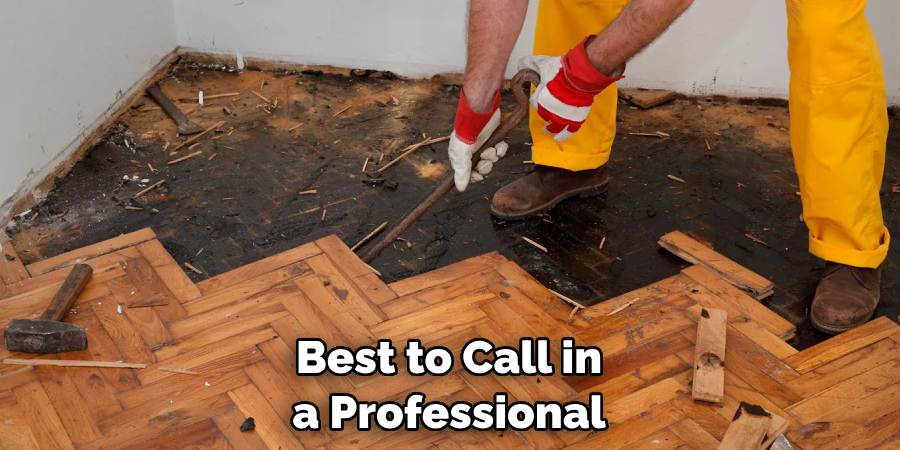
Catching subfloor rot early can save you significant time, money, and hassle in the long run. Remember, it’s always better to be safe than sorry when it comes to the integrity of your home.
By following these ten steps, you should be able to determine if your subfloor is rotten and in need of repair.
5 Additional Tips and Tricks
- Look for soft spots in the flooring. These indicate that the subfloor has become weak, as moisture has seeped between the layers of plywood and caused it to rot.
- Inspect for stains or discoloration on the underside of the flooring. This indicates that water is leaking through from below and damaging your subfloor.
- Check for any mold or mildew growth on the subfloors. This is a sure sign of moisture intrusion and could result from rot in the subfloor.
- Look out for peeling paint or wallpaper near the floor, which can also indicate that water has been seeping through the walls and damaging your subfloor.
- Inspect the joists underneath the subfloor. If any of them are soft or spongy, this likely means they have been weakened by water intrusion and may need to be replaced.
In addition to these tips on telling if your subfloor is rotten, it’s also important to watch for any common causes of rot, such as leaky pipes or poor ventilation. These can be addressed and fixed before the problem worsens, saving you time and money in the long run.
5 Things You Should Avoid
- Avoid walking on wet subfloors as much as possible, as this can cause them to become weaker and more prone to rot.
- Never attempt to repair rotting subflooring yourself; instead, contact a professional experienced in dealing with these issues for advice.
- Don’t ignore the signs of water damage, such as discoloration or soft spots in your subfloor, as this can worsen the rot over time.
- Don’t paint or wallpaper over any areas already showing signs of water damage, as this could cause further issues with your subfloor.
- Never use a steam cleaner on a wet subfloor, as this can worsen the problem and cause more damage.
By following these tips on telling if your subfloor is rotten and avoiding common mistakes, you can help ensure that your home flooring stays in top condition for many years to come.
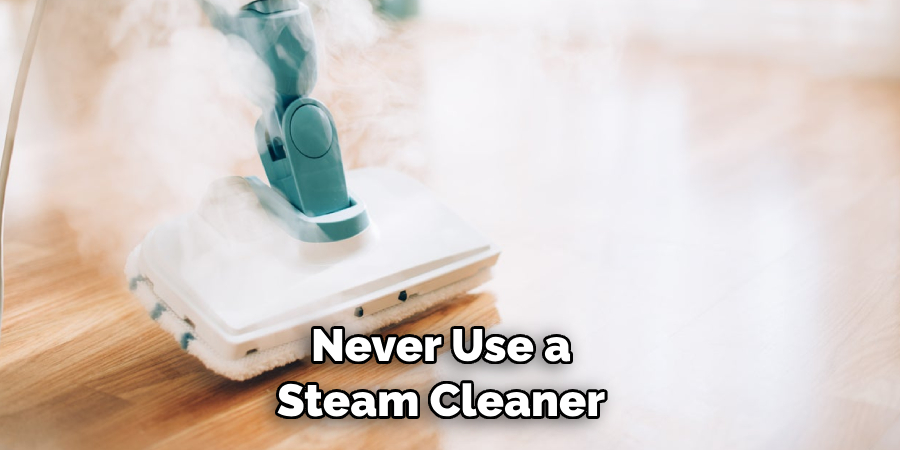
Conclusion
Ultimately, if you suspect your subfloor is rotten, it’s best to take action immediately. When left to linger, the damage can become much more serious and present a greater risk in terms of safety. That’s why paying attention to the telltale signs of rotting, namely visible mildew or mold growth and an unpleasant aroma is important.
Even if your subfloor looks perfectly fine and odorless on the surface, you should still test for moisture with a moisture meter.
Lastly, take preventive measures such as increasing ventilation or adding insulation material at the attic or crawlspace level to prevent additional water infiltration and reduce interior humidity. Taking proper care of the subfloor now will save time, money, and effort in the long run – not to mention peace of mind.
Hopefully, the article on how to tell if subfloor is rotten has been informative and useful. With more knowledge, you can take preventive measures to ensure your subfloor remains in good condition for years to come. Thanks for reading!
